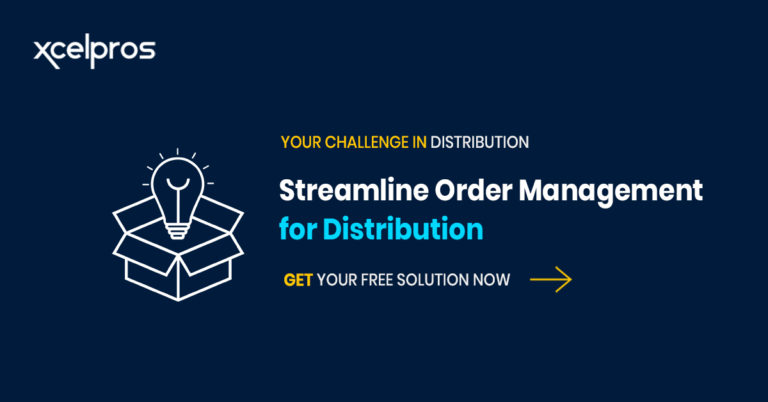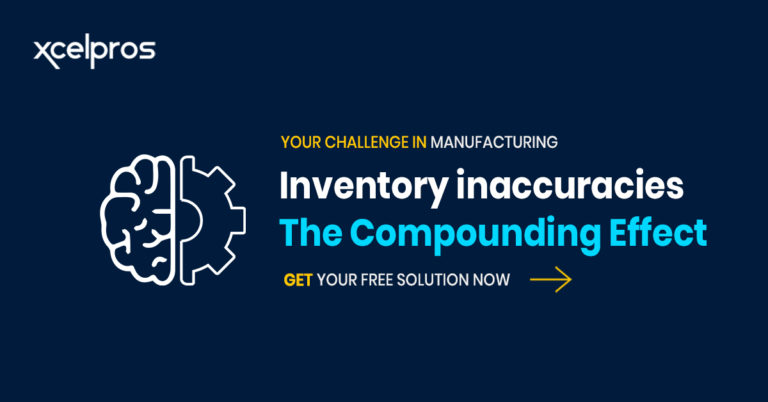At a Glance
- Per Harvard Business Review, US corporations lose half of their customers every five years on an average, unable to meet their demands and needs on-time.
- An industry report* showed that on-time delivery motivates 72% of customers to repeat purchase from the same seller.
- The most important step towards achieving optimal on-time delivery metrics involves solving operational issues at the grass root level.
- Organizing a well-structured Daily Operational Meeting (DOM) not only increases productivity but also improves customer service.
- 61% customers in the United States reported that they would even prefer paying to receive their purchases on the day they order, per Logistics Bureau.
- Implementing a modern ERP solution will streamline your business processes, meet customer requirements and ensure on-time delivery.
In Part 1 of this series, we brought out the challenges like lack of communication across departments and inefficient business processes that hinder the on-time delivery of products.
As discussed in the prior blog, a few Key Performance Indicators (KPIs) that are critical in measuring delivery performance in logistics and supply chain operations are:
- On-Time Delivery (OTD) or On-Time Performance (OTP)
- Delivery in Full (DIF)
- Delivery in Full On-Time (DIFOT), On-Time Delivery in Full (OTDIF) or even On-Time in Full (OTIF)
- Cost as a percentage of sales
- Inventory Turns (days)
Consistent problems with OTD not only affect your business and its reputation, but also customer relations and company’s supply chain. On-Time Delivery in Full (OTDIF) can be impacted due to a variety of reasons. To name a few:
- Bad forecasts
- Supplier delays
- Quality delays
- Product rejections
- Other technical and operational issues such as ineffective Material Resource Planning (MRP) system and outdated ERP system.
Per McKinsey, poor service levels cost the US CPG industry a staggering $24 billion dollars a year.
Steps like identifying the root cause of late deliveries and prioritizing to avoid them coupled with an effective plan to get rid of such problems help your organization increase your on-time delivery metrics and productivity.
- Kroger, the grocery giant, is known to fine suppliers $500 for each order that is delayed by 2 days or more.
- Walmart has been very stringent on its delayed receipts from its suppliers. It has charged suppliers upto 3% of the purchase price for every order delivered that has not been delivered on time – early, late or partial.
In this part, we will highlight the remedial measures that need to be taken to enhance DIFOT metrics.
Since bringing in a crop always starts with harvesting the “low-hanging fruit”, I decided to get my team together to discuss the challenges that we faced to know where to begin. In considering the lack of solid processes, planning and communication challenges, I instituted daily operations meetings. What followed wasn’t rocket science, but pure magic.
What is Daily Operations Meeting (DOM)?
An operations meeting is conducted to discuss and review the process, progress and performance of the team, evaluate the pre-defined goals in key performance indicator, identify and analyze the issues and come up with a corrective plan to improve the overall operational performance.
01. Organizing the Daily Operations Meeting
You might think, “It’s just a meeting – how complicated could organizing it be?” Who should attend, who should document the meetings, what are the ground rules, what will be the structure/flow of the meetings, and what will be the frequency? These questions must be answered and you will only get one chance to encourage buy-in from the team.
Organizing a daily operations meeting can be quite tricky and complicated. You need to plan in advance the following factors:
- Plan the target audience/attendees for the meeting and clearly define who will attend the meeting.
- Plan the documentation process and define who will maintain the minutes of the meeting.
- Define the ground rules.
- Organize the structure / flow of the meeting and its frequency.
I decided to start with a core team that consisted of the Customer Service Manager, Supply Chain/Procurement Manager, Director of Operations, Quality Manager and Engineering/Maintenance Manager and added Operations Supervisors and VP; sales later.
I scheduled these recurring daily meetings and asked my Customer Service Manager to document the meetings with minutes that would be placed on a shared directory. I established some ground rules intended to get everyone to participate with one common goal: an improved OTD percentage.
02. Structured Operations Meeting
An effective operations meeting must have a properly organized predefined structure to achieve the purpose of the meeting – an improved OTD percentage. We should plan the agenda of the meeting in advance, prioritize the problems as to which issue to be addressed first, what comes next and must strictly adhere to the structured agenda.
There had not been an Operations Meeting in more than two years and the team was skeptical that this would provide value. Instead, they saw it as another thing to steal the valuable time. I began with expressing the ground rules:
- Be professional;
- Recognize we have a common goal;
- Recognize that passion drives energy that can be perceived as hostile, but that is intended to drive positive change and comes from an honest place;
- Trust each other;
- It’s not a blame game; and
- No finger-pointing.

The structure of our meeting started with an analysis of past due orders and expected receipt dates. We evaluated and came up with solutions to control past due orders and to accelerate receipt.
Then we looked at open work orders for the day/week and discussed any quality and maintenance needs that would create bottlenecks or delays. We discussed solutions to challenges that were brought to light and immediately determined that we needed to revise some processes and SOPs and, most importantly, work together.
03. How Our Team Improved – The Rapid Result
When the first major problem was brought to light in one of our meetings, the finger-pointing started (old habits are hard to break). But, over time the team realized that we were in this together, learned to be honest with each other and, most importantly, to be accountable for our own actions.
Within 90-days, our TEAM improved OTD from 76% to 98%. The biggest driver for this positive change was improved COMMUNICATION.
Insights to quickly help you improve your On-Time Delivery plan
Having discussed the challenges faced during OTD and the solutions to overcome such challenges, we will be taking it a step further and provide a winning a formula for actualization of our organizational goals.

Sharing success and acknowledgment of failure is motivational when success and continuous improvement are realized throughout an organization. It’s amazing what simple recurring operations meeting can produce.
01. Reliance on Systems and Team Members (Trust)
Improved demand forecasts and a systematic approach to surveying suppliers so that lead times can be updated to reflect current realities, along with a meticulous review of demand history and ongoing updates of safety stock levels, is the first step to convincing a team to increase its reliance on technology planning tools. This reliance will enable on-hand material availability and provide clear vision of customer requirements for improved production planning, including optimized machine utilization and labor resource availability. The more we rely on our systems, the more we improve and isolate opportunities for further improvement. As we gained more and more reliance on our systems and processes, we saw our OTD percentage increasing rapidly.
02. Improved Training Programs (Communication & Goal Congruence)
Heightened communication within the environment brought training deficiencies bubbling to the surface quickly. They were countered with focused training programs- ones that promoted improved safety, quality, operational efficiency and productivity. As issues were vetted in our operations meetings, we worked with our Human Resources team to implement improved training and saw an immediate correlation to reduced scrap and safety-related instances.
03. Updated Processes and SOPs (Goal Congruence)
With predictability and consistency as key goals, we moved beyond “form over substance” and updated our processes to reflect our true intentions. The new processes were streamlined and optimized which eliminated costly effort that our customers were not willing to pay for. Perhaps, the most significant contribution was the update of Standard Operating Procedures (“SOPS”). Improved operator training and accurate SOPs allowed us to reduce errors and produce product with high quality & purities and improved stability and consistency, which provided a roadmap for identifying issues in a real-time fashion so that immediate actions could be taken to rectify issues, delivering consistent results.
While harvesting low-hanging fruit is rewarding, true achievement comes to those that can stretch for the real treasure in the higher branches.
Make your product easier to buy than your competition, or you will find your customers buying from them, not you.”
ERP Helps You Achieve On-Time Delivery (OTD) KPI
If you are using spreadsheets to keep track of your supply chain, it’s time for you to switch to automation as manual processing is cumbersome and error prone, costing you millions. Deploying a modern ERP system can boost your supply chain efficiency: from better inventory control, to faster delivery of goods, to improved productivity.
A good modern-day ERP ensures stronger supplier relationships, streamlined shipping operations, and better customer communication through reliable lead, opportunity and quote tracking. The software offers fundamental benefits such as reduced lead-time, on-time shipments and reduction in cycle-time. Reduced lead-time is a critical parameter as non-availability of an item can create issues such as missing delivery schedule and losing customers to your competition.
The real-time data analytics helps you to better manage inventory levels and order fulfilment rates.
Per a global supply chain survey, data analytics will help grow DIFOT to 96% or above, which is at least 7% higher than the industry average.
 Companies with a modern ERP get a 360-degree view of the customer. This holistic view of the customer relationships and their effectivity helps you to better serve customers. You can offer a tailored service to each customer, prioritize your best customers, and automate allocations, fulfillment and discounts for your “A” customers. Improved shipping operations give you the scope for reliable order tracking and shipping notifications.
Companies with a modern ERP get a 360-degree view of the customer. This holistic view of the customer relationships and their effectivity helps you to better serve customers. You can offer a tailored service to each customer, prioritize your best customers, and automate allocations, fulfillment and discounts for your “A” customers. Improved shipping operations give you the scope for reliable order tracking and shipping notifications.
ERP has really helped with a better distribution of information across the internal teams within our company.
Success Story
One of our clients, a US-based manufacturing company initiated an upgrade of their existing ERP software. The upgrade was imperative as the system was hurting overall profitability and enterprise-wise efficiencies. There was a lack of visibility of data, most communication was manual, inventory was all over the place, resources & human capital was untracked from a costing perspective etc. Within 6 months of upgrading their ERP system to a modern cloud-based system, their on-time delivery improved by 28% as the system was able to track each step of the operation with enhanced visibility of inventory and supply chain.
Key Takeaways
- Finally, most companies manage OTD not just as a single date but instead to a range of dates – missed (X) or expected (Y) dates.
- A structured operations meeting lead by a strong leader can do wonders to OTIF. Resolving operational issues at a micro level is essential.
- An effective ERP software solution helps drive efficiencies across the board.
- A metric that drives customer satisfaction will drive long-term customer retention and revenue for your organization.





















